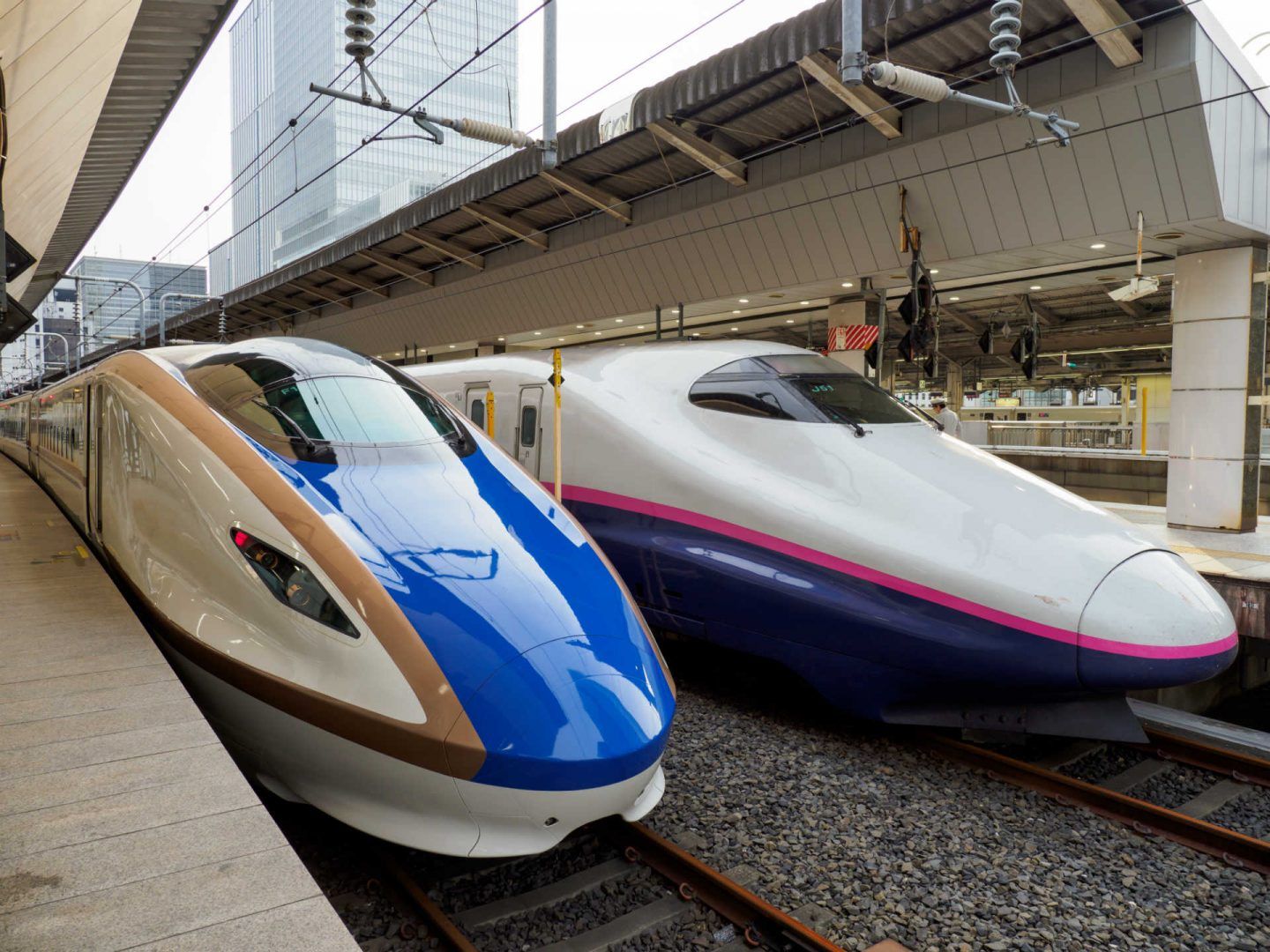How to get to Japan
If you’re wondering how to get to Japan, note that several airlines fly nonstop from the US and Canada to Tokyo, Ōsaka and Nagoya, including Air Canada, ANA, American Airlines, Continental, Japan Airlines and United.
Flying time is around fifteen hours from New York, thirteen hours from Chicago and ten hours from Los Angeles.
Traveling from the UK? ANA, British Airways, Japan Airlines and Virgin all fly nonstop from London to Tokyo, with flights taking in the region of 12 hours.
How to get around during your Japan trip
Thanks to its efficient, reliable, varied transportation system, getting around Japan is easy. Here’s an overview of the options:
Shinkansen
The Shinkansen bullet train is the fastest way to travel between major cities like Tokyo, Kyoto, and Osaka. With speeds up to 320 km/h (200 mph), it’s quick, comfortable, and often offers scenic views.
Foreign tourists can purchase a money-saving Japan Rail Pass for unlimited travel on most JR trains, and certain buses and ferries — more on the Rail Pass a little later.
Local trains and subways
Japan’s extensive rail network covers cities and many rural areas, with subway systems in cities like Tokyo and Osaka being an efficient way of getting around urban centers.
Buses
Ideal for budget travelers and anyone wishing to reach more rural areas, highway buses are an affordable option for longer distances, while local buses are very handy in rural areas not served by train.
Domestic flights
For distant locations like Okinawa or Hokkaido, low-cost airlines are on hand with fast and affordable flight routes.
Do you need a Japan Rail Pass for 7 days?
As revealed in our guide to the choosing the right Japan rail pass, a 7 day option is available — and strongly recommended — if you’re planning to travel around, as is the case with this 7 day trip to Japan.
How to travel with the Japan Rail Pass
For the best price, buy your JR Pass online ahead of your trip.
You’ll be sent an Exchange Order (JR voucher) by post. You can opt to have this sent your home address before you travel, or have it delivered to your temporary residence in Japan.
Once you arrive, go to any of the JR Exchange offices at airport terminals, train stations, or metro stations to make the exchange with your JR Exchange Order.
You need your passport (with a Temporary visitor stamp/sticker in it) and the physical Exchange Order. Only the original document is accepted.
You can then choose the first day you wish to start using it.









